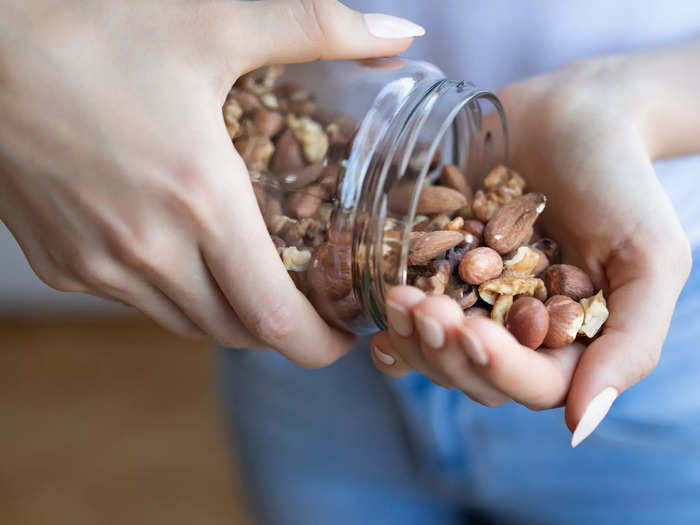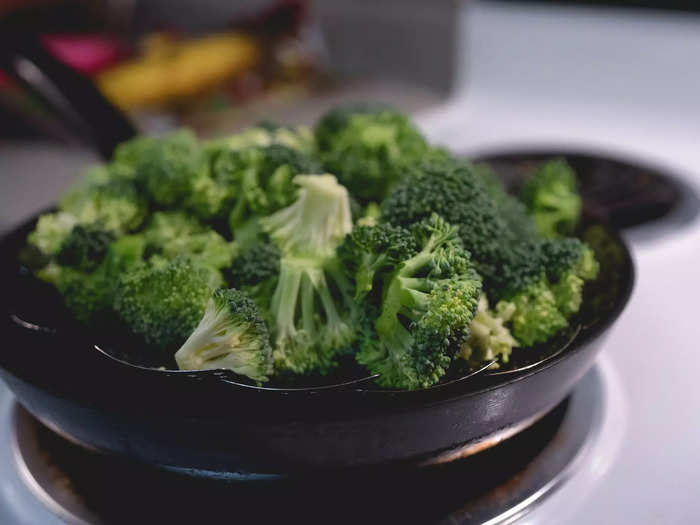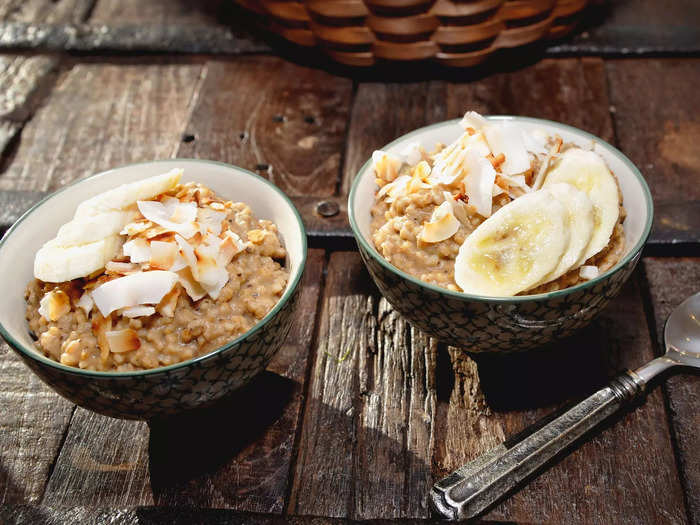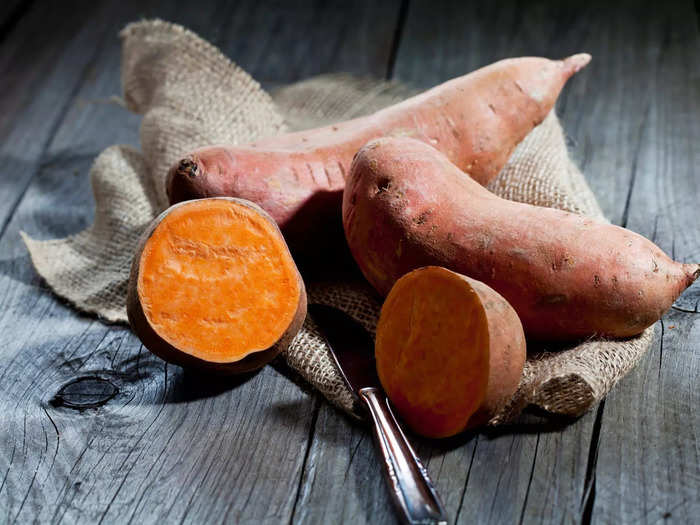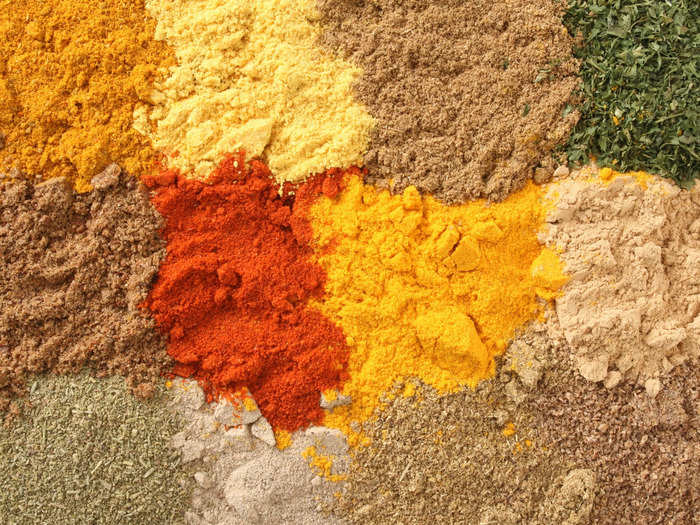Hearty soups filled with beans and herbs, fermented breads like sourdough, and wine are all staples in many of the Blue Zones.Westend61 via Getty Images
- Blue Zones are areas of the world where people live the longest, healthiest lives.
- Their diets include lots of carbohydrates, and fiber, an important nutrient for digestion.
If you want to live a long, healthy life, there's good evidence that getting enough fiber is key.
Foods rich in fiber, including plenty of carbohydrates, are featured prominently in diets in the Blue Zones, areas of the world where people live the longest, healthiest lives, according to research.
Blue Zones represent a wide variety of cuisines, like Japanese, Greek, Italian, and Costa Rican. While the specific foods vary, common high-fiber foods groups like beans, nuts, whole grains, herbs, and green veggies make up the backbone of Blue Zones diets.
Research suggests getting enough fiber is important for digestive health, stable blood sugar, and prevention of chronic illnesses like heart disease and cancer. Foods rich in fiber can also help with weight loss by keeping you full after eating.
To reap the benefits, the FDA recommends consuming about 28 grams of fiber per day (or between 21-38 grams, depending on your overall calorie needs).
Start adding more fiber to your diet by incorporating Blue Zones staples, from cabbage and kale to bread and oatmeal.
Nuts and seeds
Nuts and seeds are rich in healthy fats, vitamins, and minerals as well as fiber. bymuratdeniz/Getty Images
Nuts and seeds have a bad reputation in the diet world for having a high caloric density, with just a handful packing up to 200 calories. But they also provide a wealth of nutrients, including plenty of fiber.
"Nuts used to be thought of as unhealthy, but they're one of the best things you can put in your mouth," pediatric endocrinologist Dr. Robert Lustig previously told Insider.
A one ounce serving of almonds, pistachios, pine nuts, or pecans contains a tenth of your daily recommended fiber intake.
Chia seeds provide the most bang for your buck in fiber, with 35% of your daily recommendation in two tablespoons.
Flax and pumpkin seeds also provide a hefty portion of fiber, with 28% and 19% daily recommendation, respectively, per one ounce serving.
Beans
From chickpeas to edamame, all beans contain fiber as well as protein. Wulf Voss / EyeEm / Getty Images
Beans are a cornerstone of healthy eating in the Blue Zones. Dan Buettner, who popularized the Blue Zones diet, recommends eating at least half a cup of beans daily for health.
There are many varieties of beans, from black beans, to tiny Adzuki beans, to bright green edamame or soy beans. All of them contain fiber, as well as protein and other nutrients.
Some of the highest fiber bean types include:
- Navy beans: 10 grams per half cup
- White beans: 9 grams per half cup
- Adzuki beans: 8.4 grams per half cup
- Black beans: 8.3 grams per half cup
- Kidney beans: 8 grams per half cup
Cruciferous vegetables like broccoli and cabbage
Crunchy vegetables are a great source of fiber. Joey Ingelhart/Getty Images
Cruciferous vegetables, including broccoli, cauliflower, and cabbage, are often maligned because of their characteristic strong, sometimes bitter flavor.
But the crunchy veggies are nutritional powerhouses, with tons of vitamins A and C as well as polyphenols, plant compounds with healthy antioxidant benefits.
Kale, cress, bok choy, and collared greens are included in the cruciferous family, along with Brussels sprouts.
Each averages about five grams of fiber per cup, so tossing them in a salad or stir-fry will get you well on the way to meeting daily fiber recommendations.
For an added probiotic bonus, consider traditional fermented versions of veggies like sauerkraut and kimchi.
Whole grains like steel-cut oats and barley
Steel cut oats are a satiating whole grain snack full of fiber. O John Sciulli/Getty Images for Burt's Bees
Since fiber is a type of carbohydrate, carb-rich foods are an excellent source to add more to your diet.
Whole grains are minimally processed, which means they retain more of the nutrients in the plant, including fiber.
Some rich sources of whole grain fiber are:
- Bulgur (cracked wheat): 8 grams per cup
- Barley: 6 grams per cup
- Quinoa: 5 grams per cup
- Oatmeal: 4 grams per cup
- Brown rice: 4 grams per cup
Whole grains also contain essential amino acids, which combined with nutrients in beans can make up a complete protein source.
Dishes based on rice and beans are extremely common staples around the world, including the Blue Zones.
Bread
Don't fear bread — some of the healthiest people in the world enjoy it regularly. pidjoe/Getty Images
Bread is another stigmatized food in many diet circles, but experts say you shouldn't fear the loaf.
Depending on the toppings and preparation, bread can be a helpful source of fiber and fits just fine in a healthy diet.
The type of bread you choose makes a difference, however. White bread is highly processed, stripping away textures as well as nutrients.
In contrast, whole grain and whole wheat breads retain more fiber from the plants from which they're made, as well as vitamins and minerals.
In addition, breads made using fermentation, such as sourdough, can provide even more benefits, since the process breaks down nutrients to make them easier to digest.
For a double dose of fiber, opt for seed breads that incorporate flax and other healthy seeds in the mix.
Root vegetables like sweet potatoes and yams
Starchy veggies can also be a fiber-rich staple in a Blue Zone diet. Westend61/Getty Images
Not all your veggies need to be green on a Blue Zones diet. Experts often recommend "eating the rainbow" to get a variety of micronutrients. Brightly colored orange and yellow root vegetables can help round out your fiber needs.
Sweet potatoes, for instance, are a staple in Okinawa — the unique purple-and-white variety in Japan is even sweeter than its orange cousin, and contains about 4.6 grams of fiber per veggie.
- Kohlrabi: 8 grams of fiber per cup
- Parsnips: 7 grams of fiber per cup
- Carrots: 5 grams of fiber per cup
- Turnips: 3 grams of fiber per cup
- Rutabaga: 3 grams of fiber per cup
Fruits
Don't forget to include fruit in your diet as a good source of fiber. berkpixels/Getty Images
Since Blue Zones vary geographically, the diet includes a broad range of foods found all over the worlds including tropical and seasonal fruits.
In Italy and Greece, popular options include stone fruits like dates, figs, and apricots. Costa Ricans favor papayas, bananas, and pineapple.
All of the above can be a great source of fiber as well as nutrients like vitamin C, potassium, and folate.
Fruits that have a wide availability as well as loads of fiber include:
- Raspberries: 8 grams per cup
- Citrus: about 4 grams per cup of oranges
- Apples: about 4 grams per medium-sized fruit
- Blueberries: 5 grams per cup
- Strawberries: 3 grams per cup
Herbs and spices
Zesty seasonings not only add flavor to food, but also micronutrients. FotografiaBasica/Getty Images
The rich culinary traditions of Blue Zone regions also include a wealth of flavors with spices, and herbs. In combination, seasonings can add a boost of fiber, as well as taste.
Aromatic plants like oregano, rosemary, thyme, and fennel are common in many Blue Zones recipes. Fresh, leafy herbs like cilantro, sage, and parsley are also delicious ways to sneak a bit of extra fiber into a meal.
While herbs and spice are generally used in small quantities, which don't have a ton of fiber or vitamins alone, they can help improve the overall nutritional profile of your diet, experts say.

